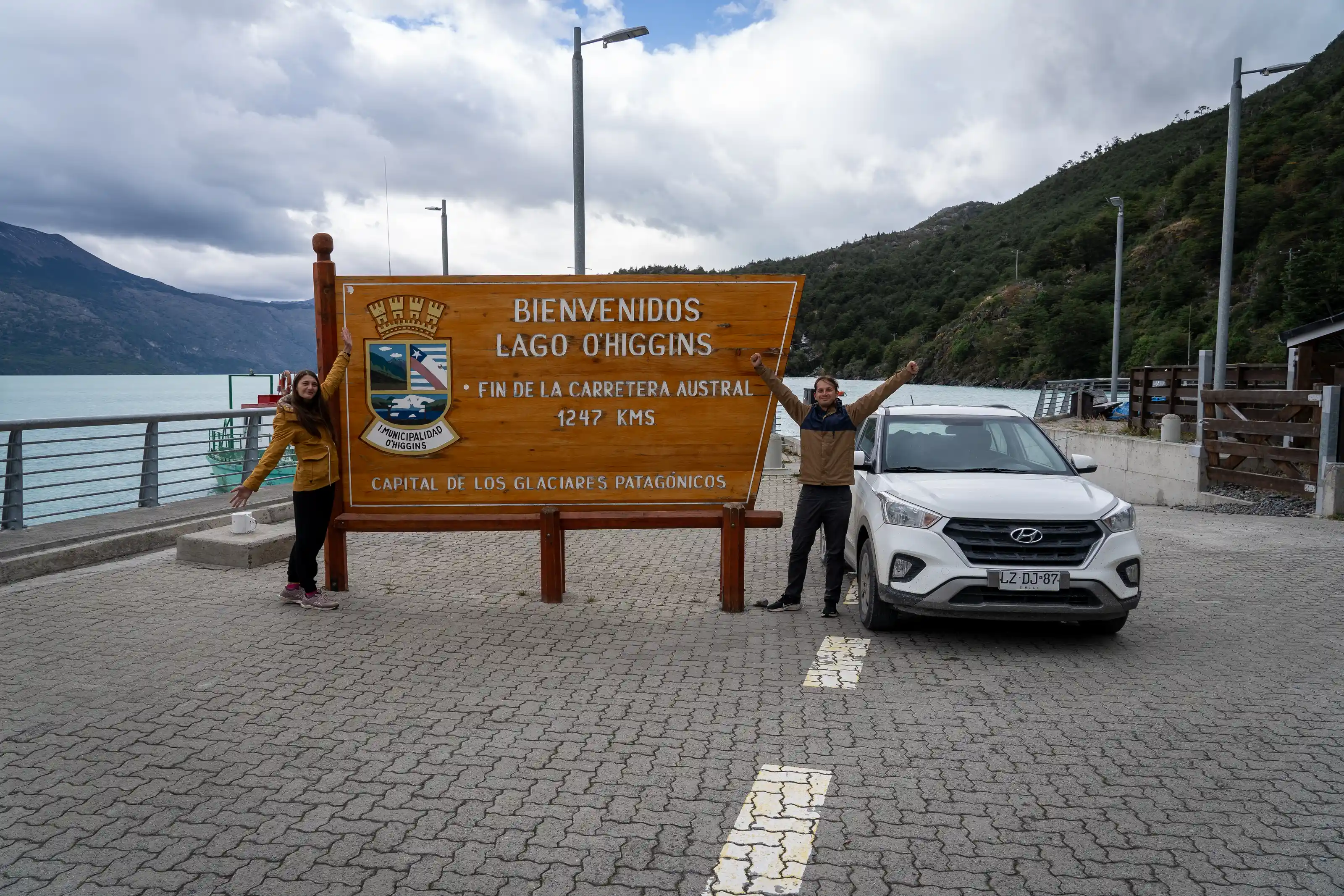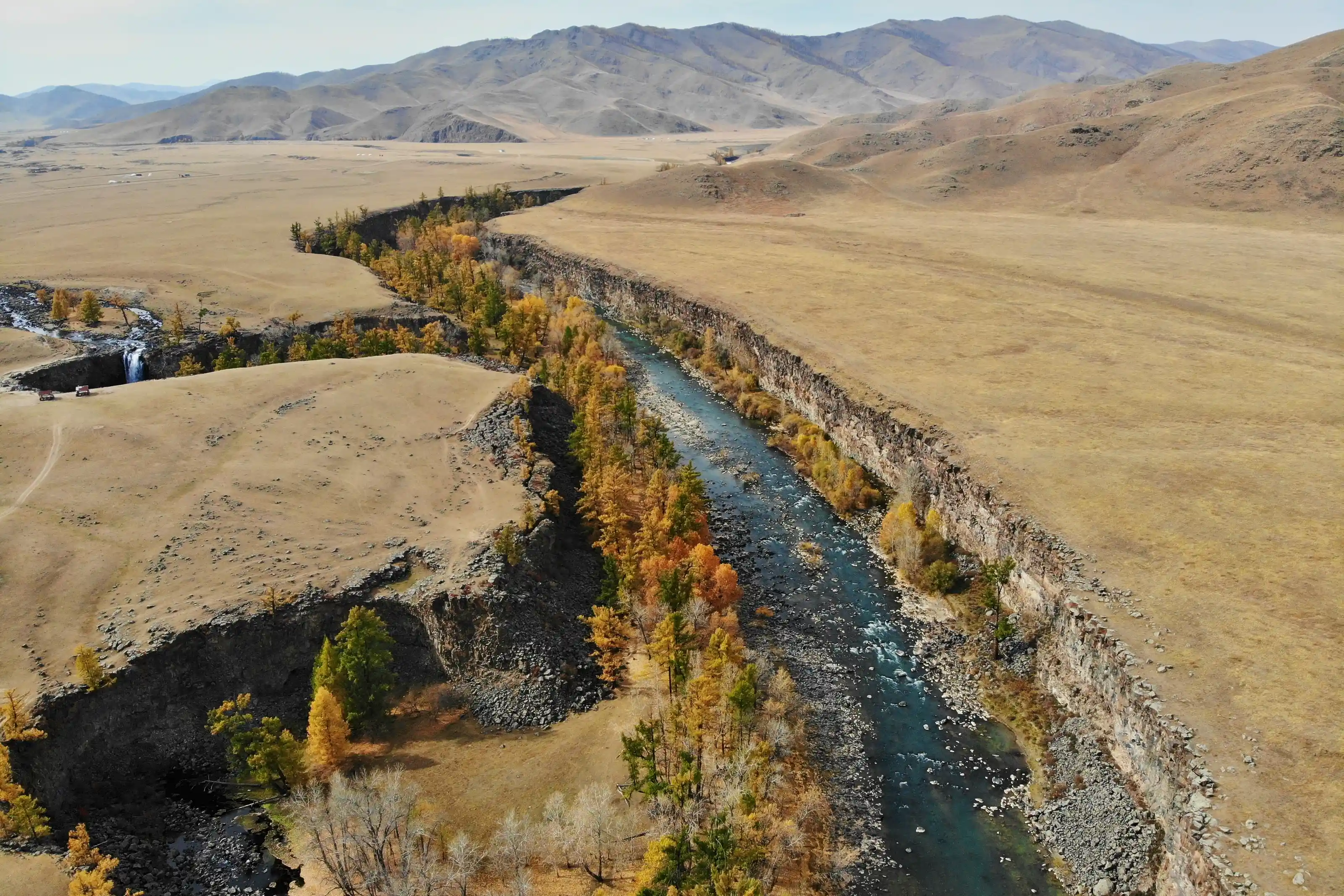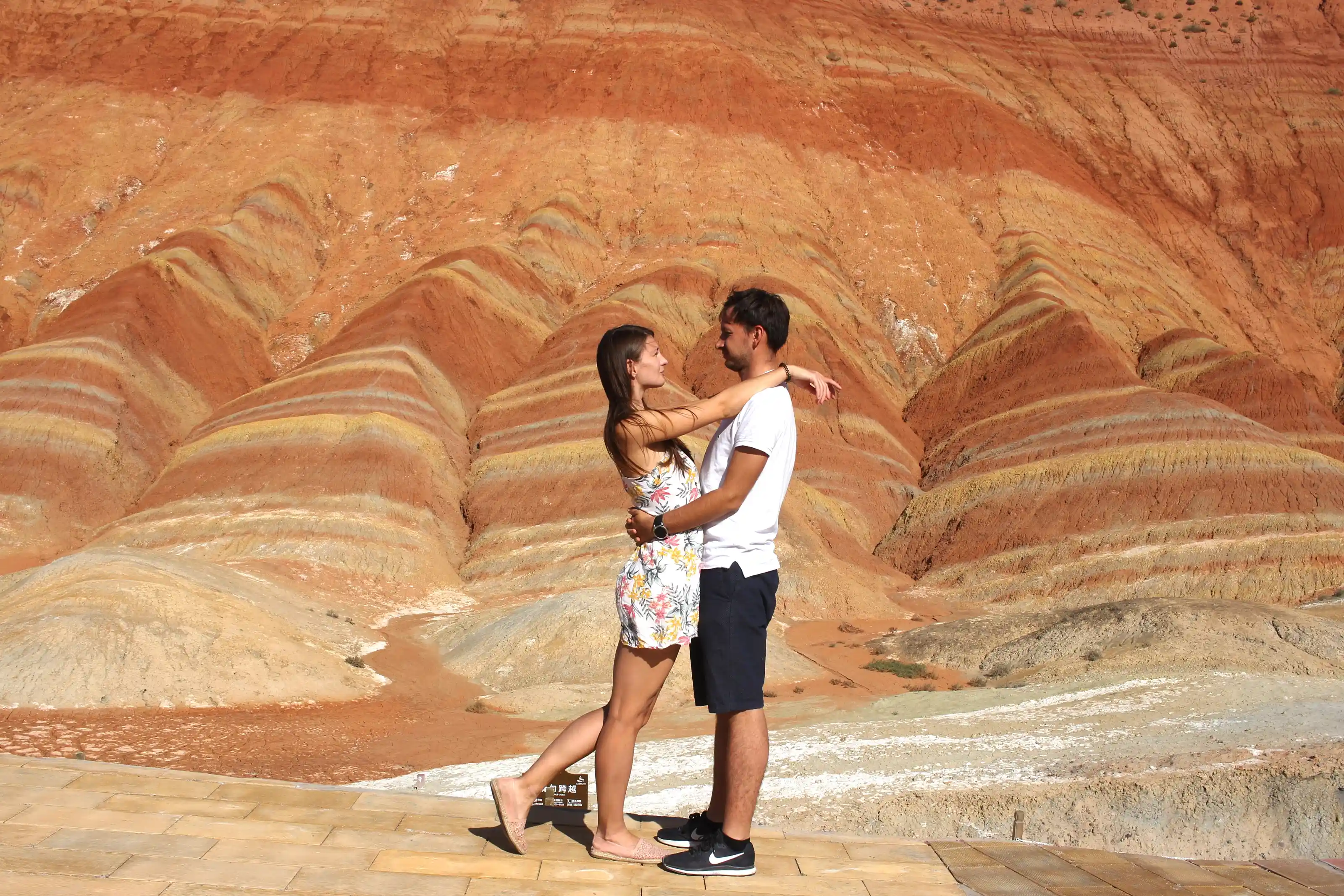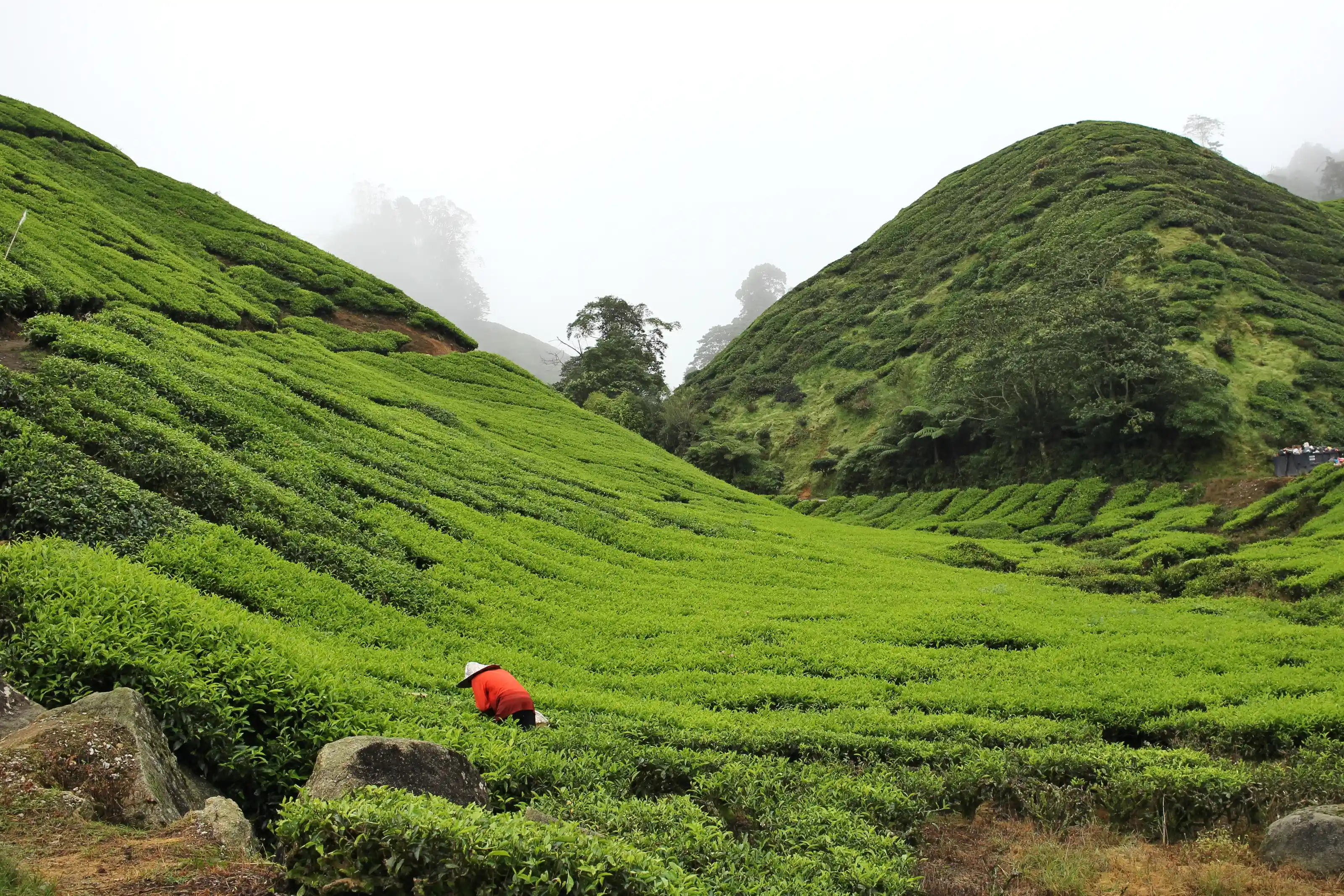We couldn’t explore Patagonia without driving the iconic Carretera Austral, also known as Ruta 7. This famous road stretches 1,247 km, beginning in Puerto Montt and ending in Villa O’Higgins, cutting through the heart of northern Chilean Patagonia. What makes it a must-visit destination is that the Carretera Austral remains the only road connecting Puerto Montt to the deep, remote, and least inhabited regions of Northern Patagonia. Along the route, you’ll find countless scenic spots, making it a trekking paradise. One reason the road is both famous and challenging is that large sections remain unpaved, solidifying its reputation as one of South America’s most remote and adventurous roads.
The Carretera Austral is also part of the new Ruta de los Parques, an initiative to connect several Chilean national parks.
What to know before driving the Carretera Austral
- How long is the Carretera Austral? The Carretera Austral spans 1,247 km (774 miles).
- What is the best time for driving the Carretera Austral? The best time to drive the Carretera Austral is during the warmer months, from December to March.
- How long does it take to drive from Puerto Montt to Villa O’Higgins? The drive takes around 29-30 hours without stops. However, with stops for sightseeing, sleeping, and eating, it took us 6 days.
- What is the road condition? The Carretera Austral is a mix of paved and gravel roads. While some sections are well-maintained, others can be rough, with potholes and narrow paths. Expect a slow pace, especially during or after rainfall when the gravel can become muddy and slippery.
- Do you need to take any ferries along the way? Yes, there are four ferry crossings required. Ferry schedules can be infrequent and affected by weather, so it’s important to plan ahead and anticipate possible delays.
- Ferry from La Arena to Caleta Puelche – If you do not want to pay for the ferry, there is an option to drive around.
- Ferries from Hornopirén to Leptepu, and from Fiordo Largo to Caleta Gonzalo – Only one ticket is required for both ferries, costing $44,300 CLP ($48 USD) per vehicle (includes driver), plus $7,400 CLP ($8 USD) per additional passenger. The ferry runs twice daily in summer. Be sure to have a reservation during the summer months. Make a reservation Honropirén-Caleta Gonzalo on this websites.
- Ferry from Caleta Yungay to Rio Bravo – This ferry is free of charge and we recommend checking the schedules beforehand at RobinsonCrusoe websites.
- What vehicle is best for driving the Carretera Austral? A 4×4 vehicle is highly recommended, especially for the rougher, more remote parts of the route, but it’s not essential. We didn’t have four-wheel drive and still made it successfully. What’s more important is having a vehicle with high clearance. We rented an SUV with Blue Rent a Car agency, and despite some communication issues at the beginning, we didn’t have any other problems.
- Is there mobile signal along the way? Not much, mostly in the larger towns. We highly recommend having offline maps with you.
- Are there gas stations along the way? Yes, you can find gas stations in the larger towns.
- Are there showers along the way? We usually showered at official campgrounds. Just ask at the reception, and they’ll typically let you in for a small fee.
- What to do if you get a flat tire? Flat tires are fairly common on this unpaved route, but you can find repair shops in most of the larger towns. We recommend ‘Vulcanización Do Segua’ in Cochrane—it was quick and not expensive.
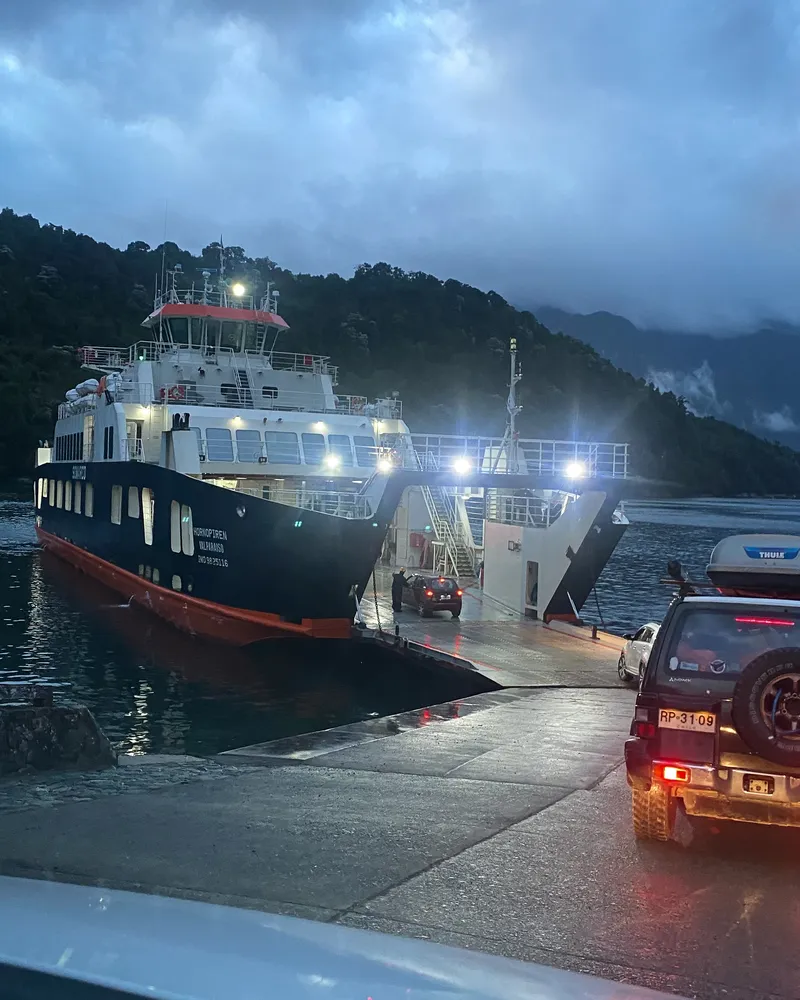
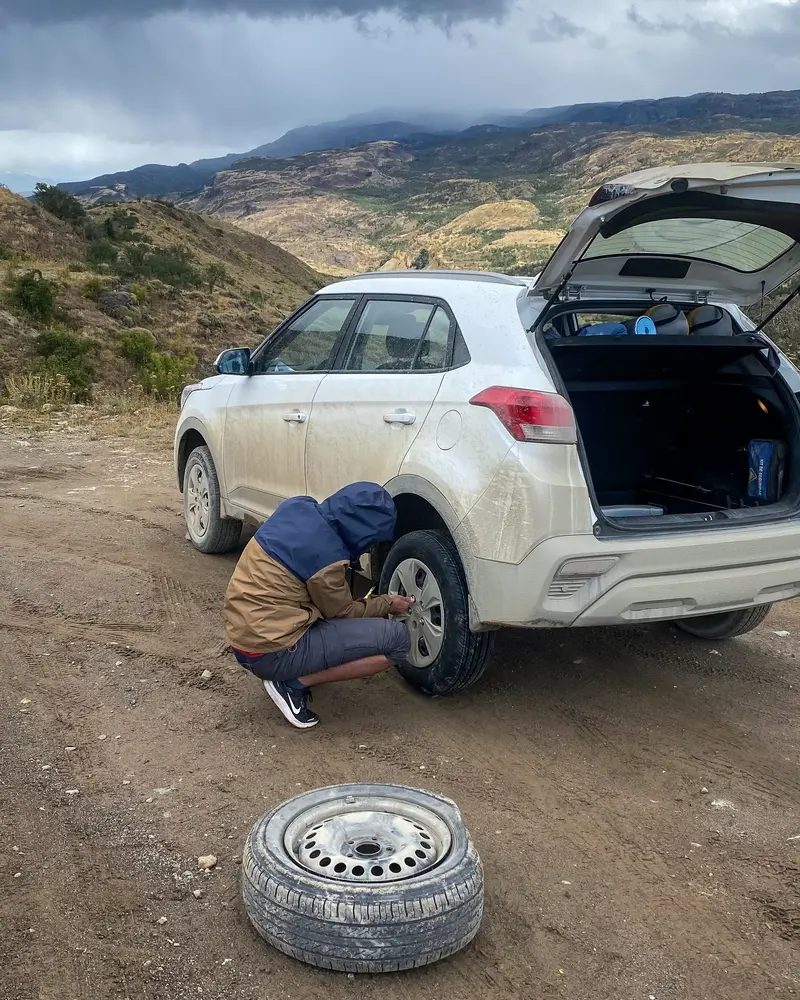
The must visit stops along the Carretera austral
The drive is long, and the unpaved sections can be quite uncomfortable. Be sure to take several breaks to fully appreciate the stunning natural scenery, as there is so much to explore. Here are the unmissable places you should visit along the Carretera Austral.
Puerto Montt
Puerto Montt is the capital of the Los Lagos region in southern Chile and the starting point of the Carretera Austral. The city offers beautiful views of the ocean and the towering peaks of the Andes. We recommend taking a walk along the seaside and visiting the Escultura Sentados Frente al Mar. If you have time, drive 30 minutes to the nearby town of Puerto Varas, known for its German architecture, where you can enjoy views of Osorno Volcano. Another charming spot to visit is small town Frutillar, located on the shores of Lake Llanquihue.
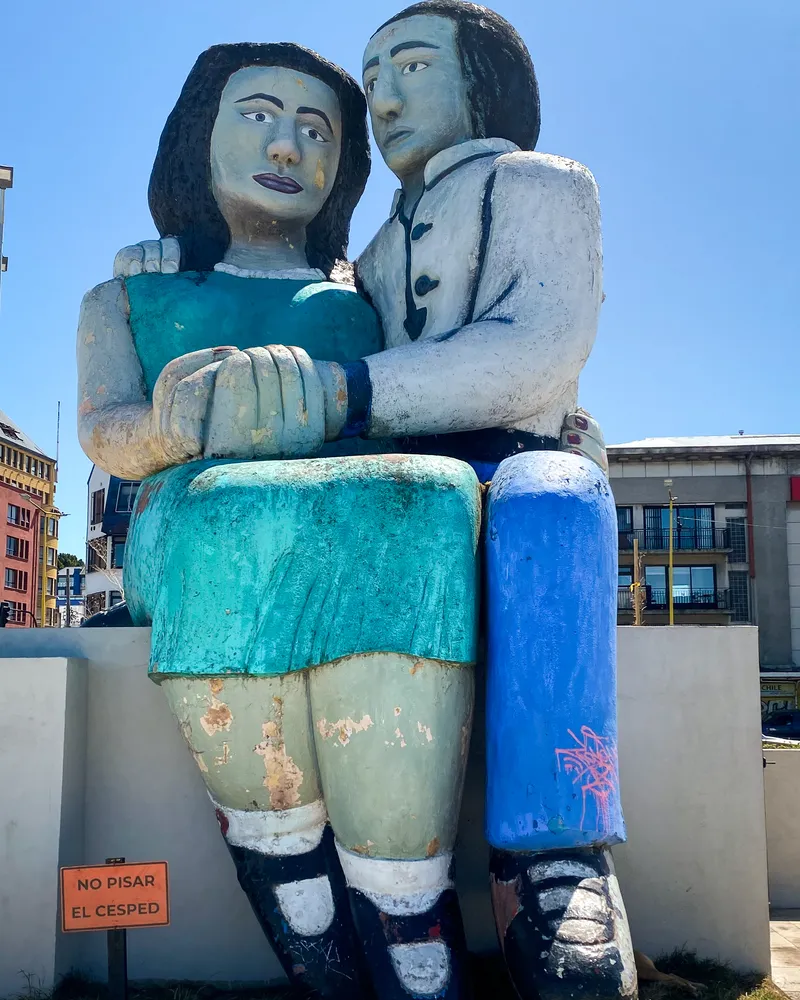
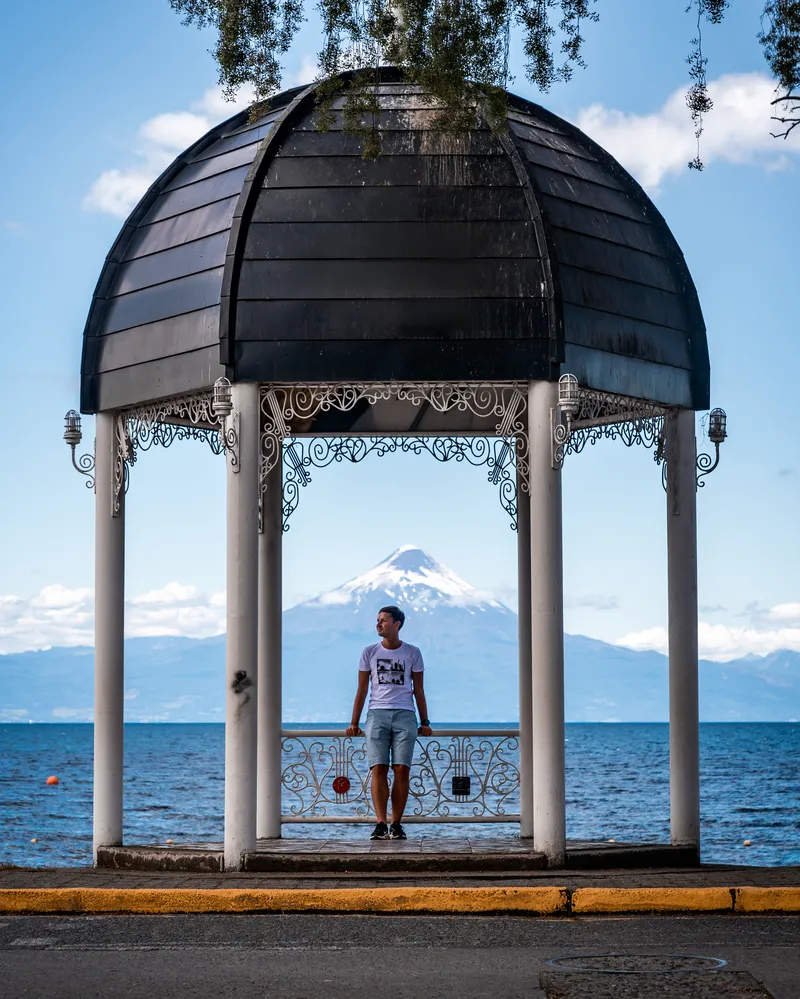
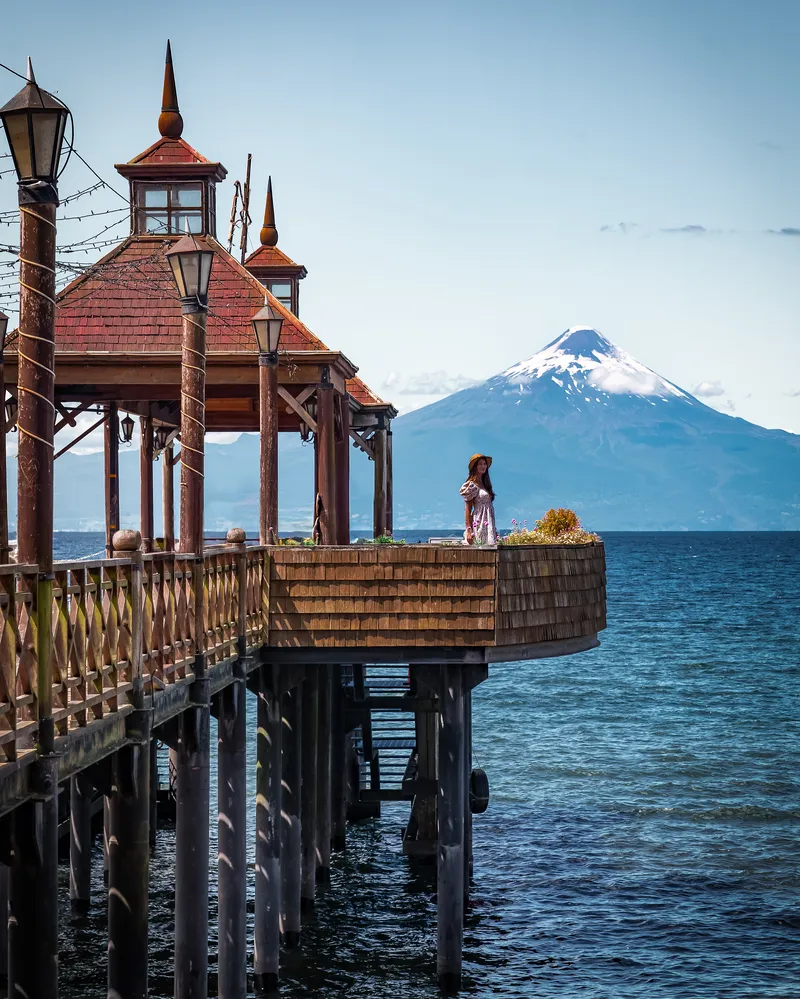
Waterfalls at Sendero Cascadas Escondidas
Enjoy waterfall views while hiking the Sendero Cascadas Escondidas thought temperate rainforest. There is no entry fee and the start point is from the Camping Cascadas Escondidas where are alsoood shelters for cooking and sitting, toilet and cold shower for free. Trail is 3,5 km long and last around 1.5 hour.
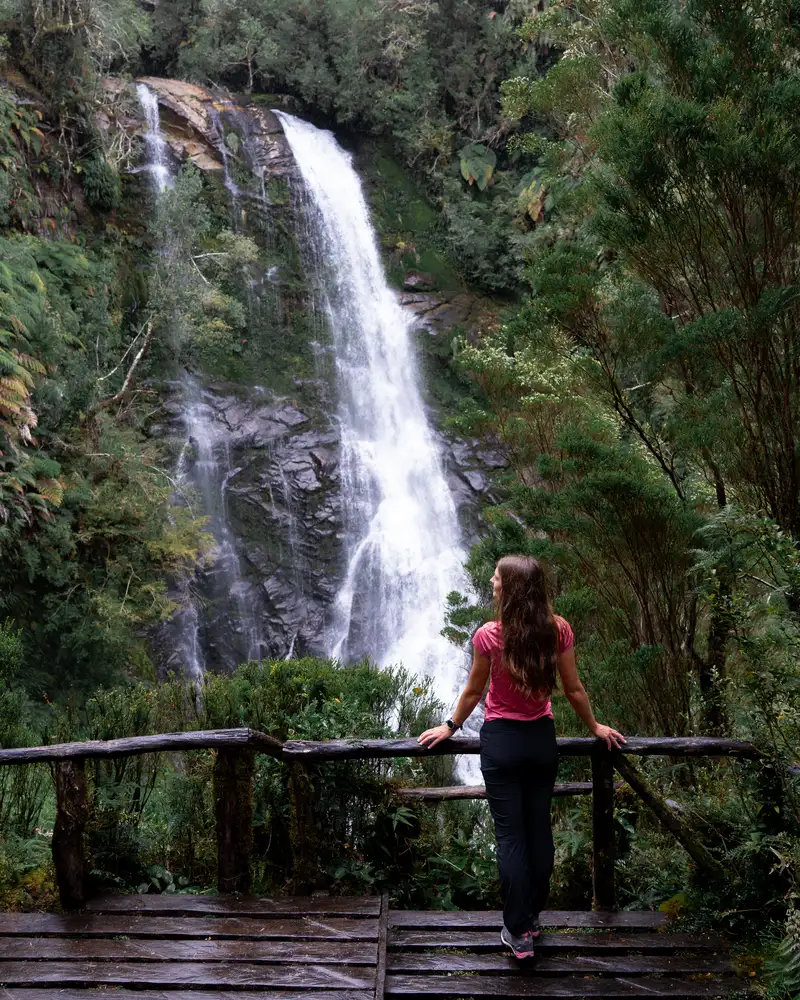
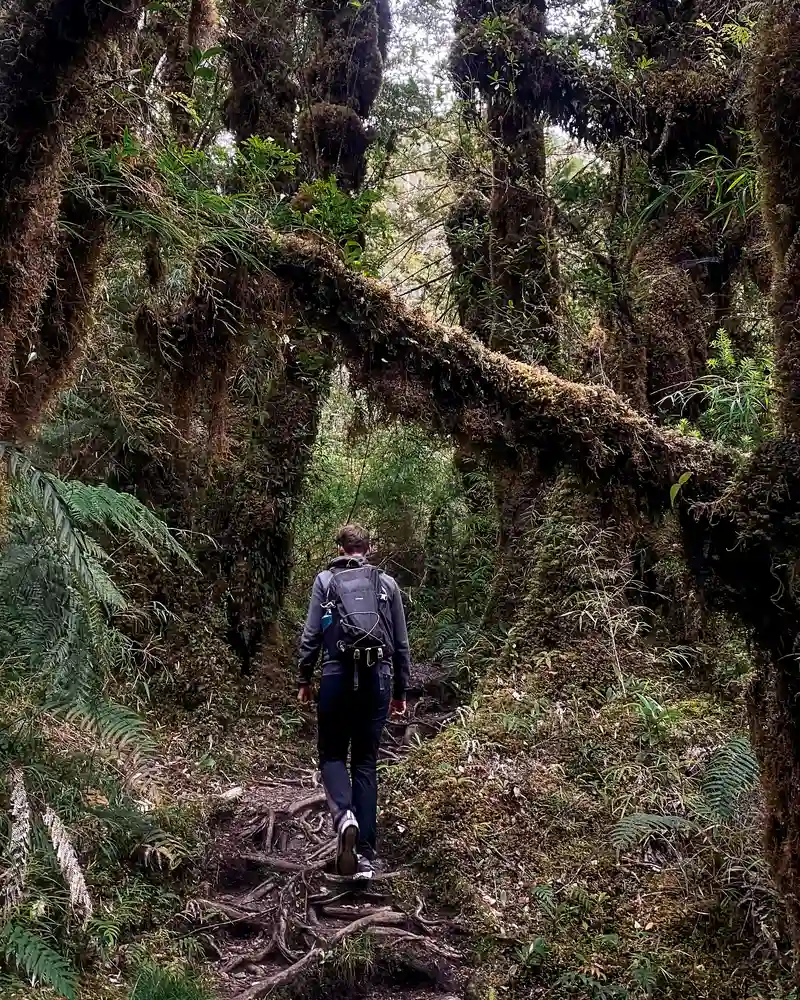
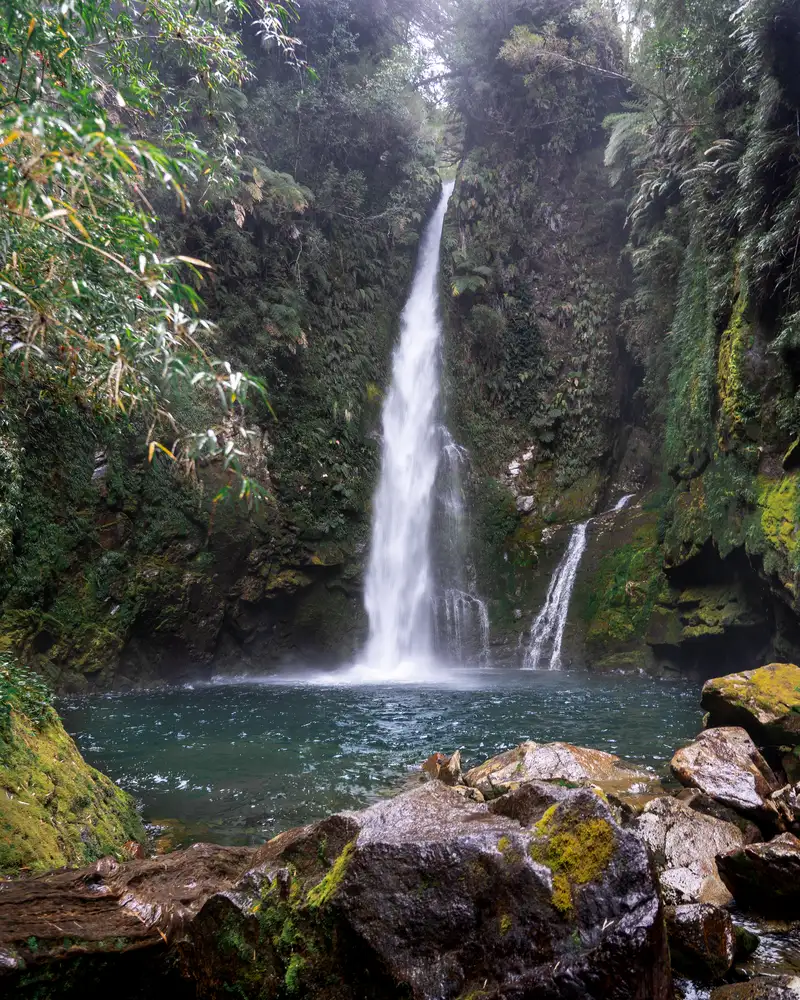
Volcán Chaitén
This hike leads up to the crater of Volcán Chaitén, which erupted in 2008, devastating the nearby town of Chaitén. The surrounding forests were scorched by pyroclastic flows and lateral explosions, and large areas of southern Argentina and Chile were blanketed in ash. The trail is 4,8 km long with an elevation gain of 621 meters, making it quite steep. The hike took us about 3 hours, and the views were absolutely stunning. We could even see steam rising from the ground. Best of all, there’s no entrance fee.
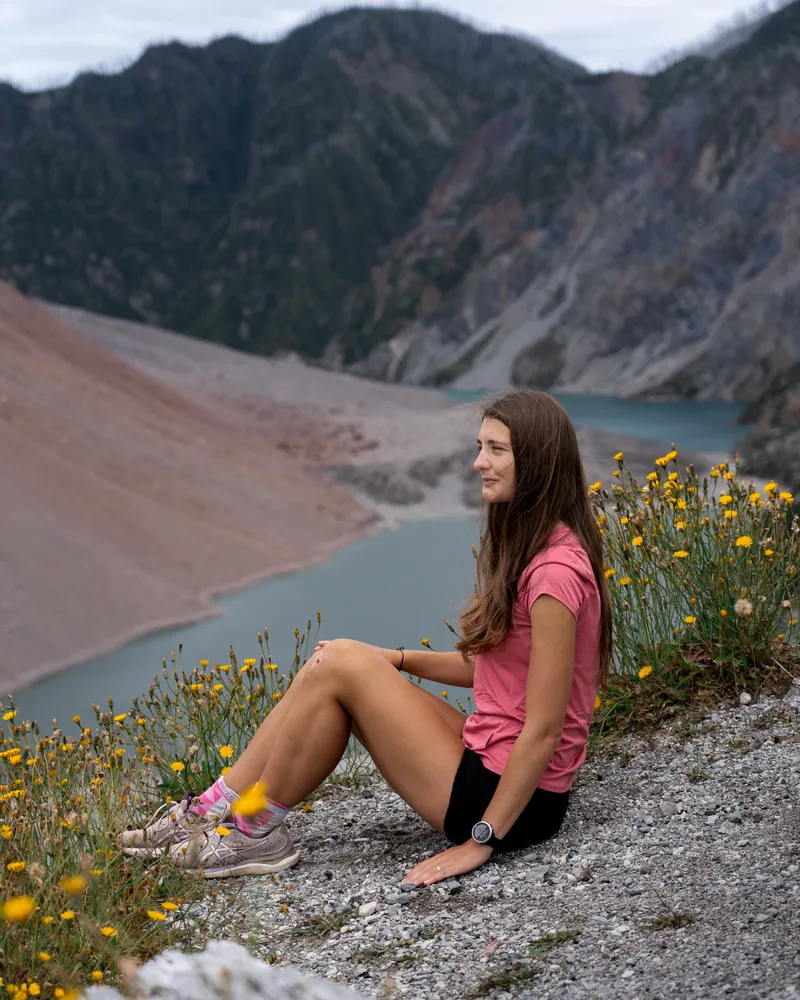
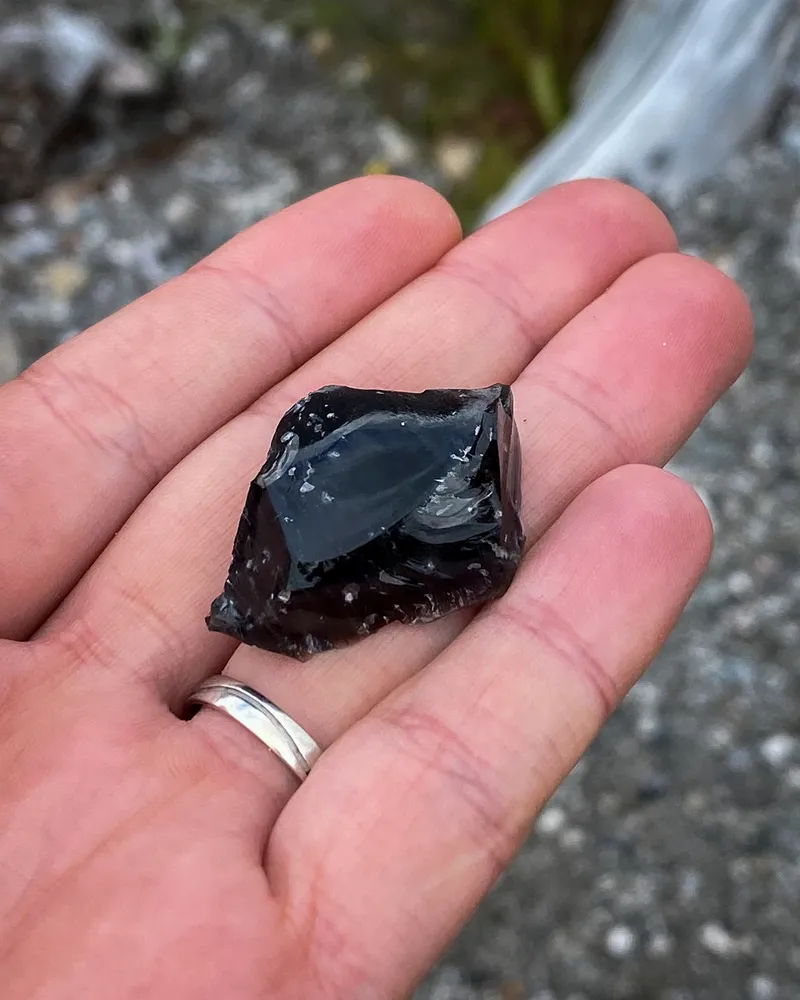
Parque Nacional Queulat
Queulat National Park attracts thousands of visitors each year, drawn by its stunning evergreen and Andean Patagonian forests, majestic waterfalls, fjords, jagged rock walls, abundant rivers, and the famous Ventisquero Colgante (Hanging Glacier). The entrance fee for foreigners is 8,000 CLP (approximately 8.5 USD). We highly recommend hiking to the Ventisquero Colgante viewpoint. The trail is 6.5 km long and takes around 2 hours to complete.
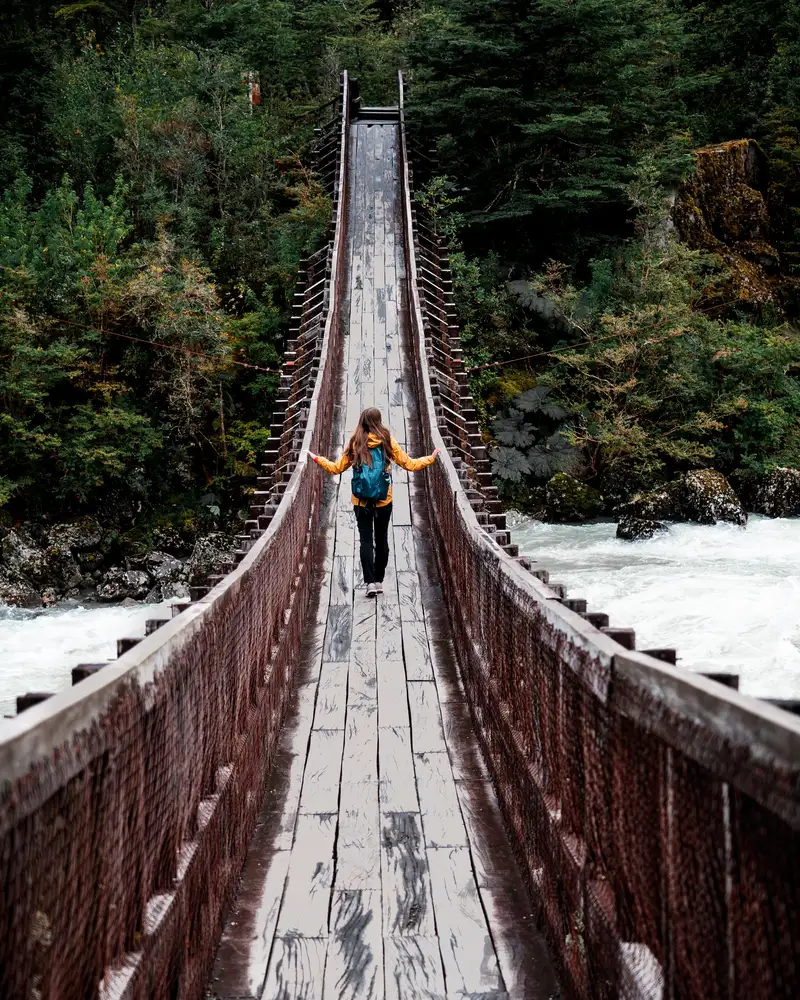
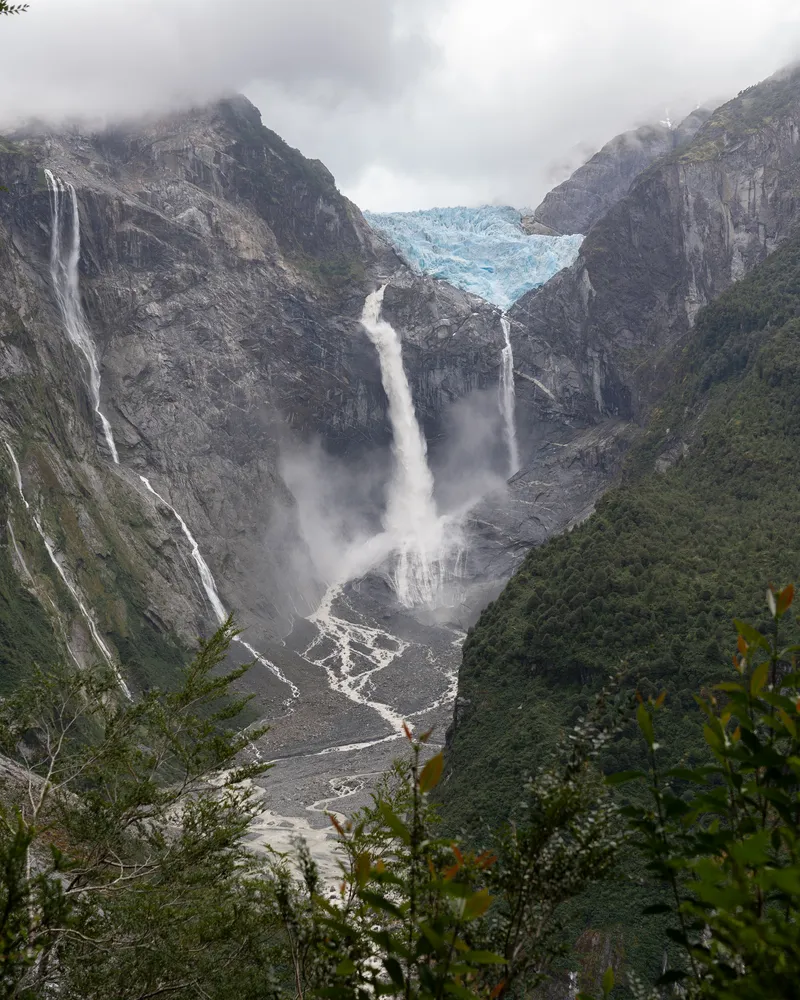
Laguna Cerro Castillo
The hike to Glacial Lake of Cerro Castillo is challenging but a must-visit hidden gem in Patagonia (though we believe it won’t stay hidden for long)! This marked difficult hike has an elevation gain of 1,277 meters and took us about 6 hours in total. The views are absolutely rewarding. The entrance fee is 15 USD, and parking is available at the Laguna Cerro Castillo trailhead (recommended only for 4×4 vehicles; we had to stop further along the way at coordinates -46.115264, -72.198782). We paid the fee at the entrance, where we also registered our names and contact information. Facilities include a toilet and cold showers.
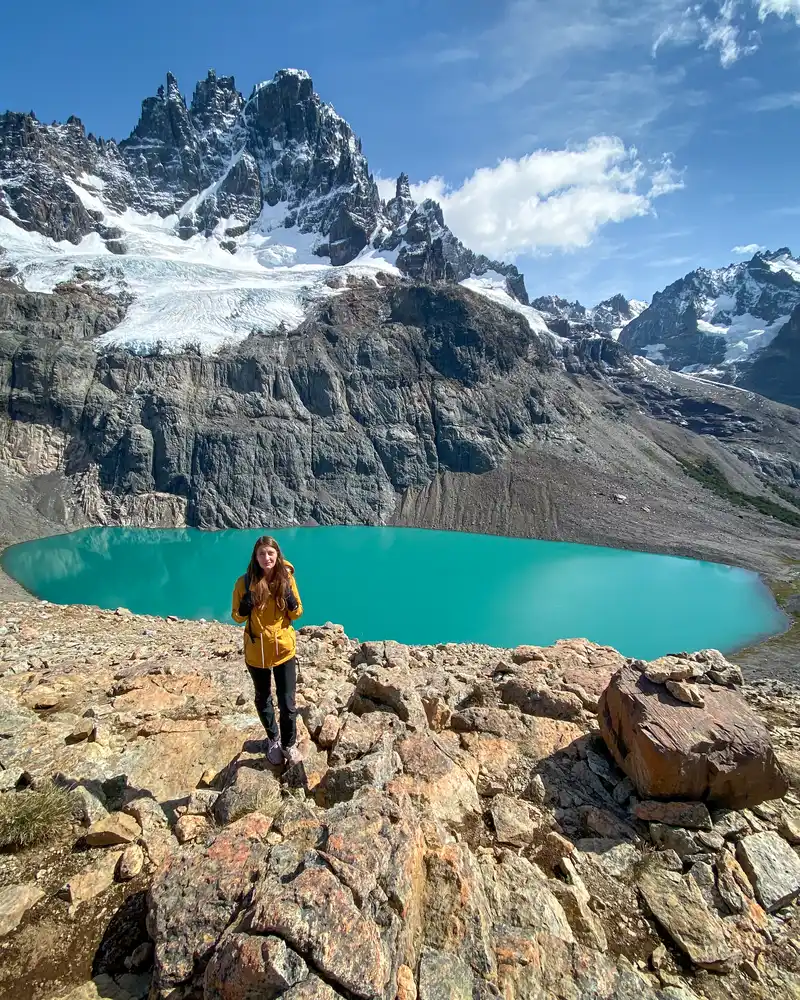
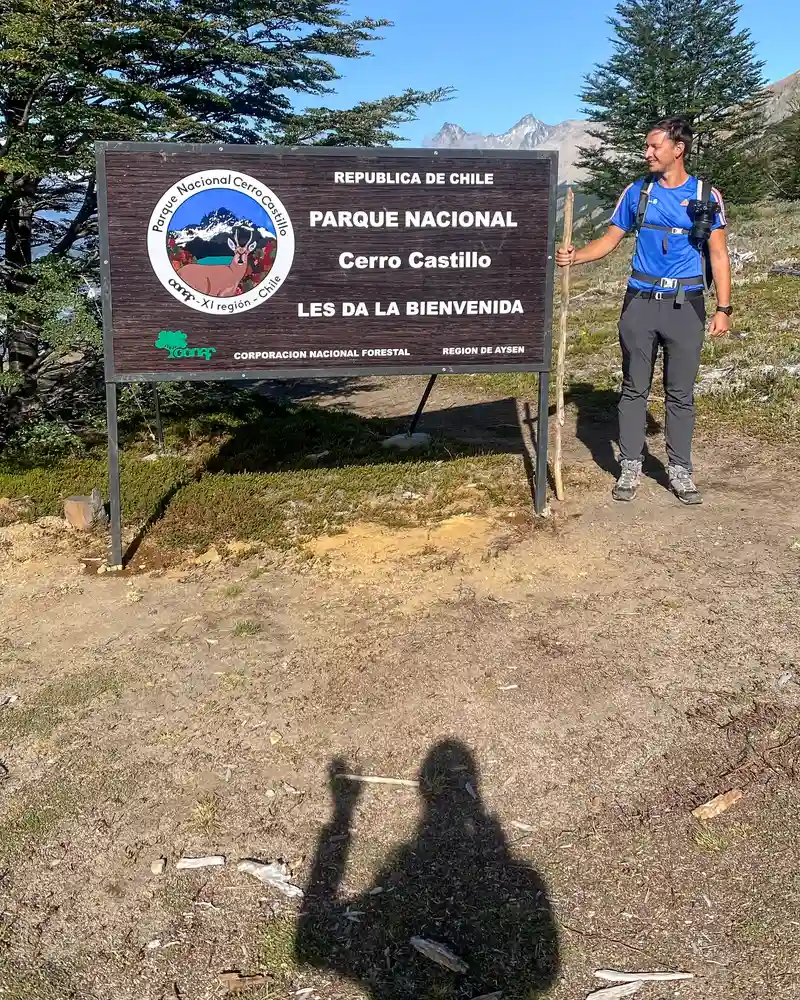
Marble Caves
The Marble Caves are a spectacular natural attraction located in General Carrera Lake and are accessible from Puerto Tranquilo, a small town right along the Carretera Austral. Drift between pure marble columns and through smooth arches carved over thousands of years. The water beneath is an almost luminescent turquoise, and the light reflects off the soft pinks, blues, and greens that run through the marble.
You can visit the Marble Caves by boat (approximately 20 USD), kayak (around 55 USD), or ferry. Many companies in Puerto Tranquilo offer these tours, allowing you to choose based on your preferences. A morning tour is recommended for the best light conditions.
You can also combine your visit to the Marble Caves with a trip to the nearby San Rafael Glacier, a stunning wall of ice hidden in the heart of the rainforest.
Confluencia Rio Baker/Neff
The scenic viewpoint at the confluence of two rivers is a short stop, just a 10-minute walk from the Carretera Austral road. You can park your car at Mirador Rio Baker.
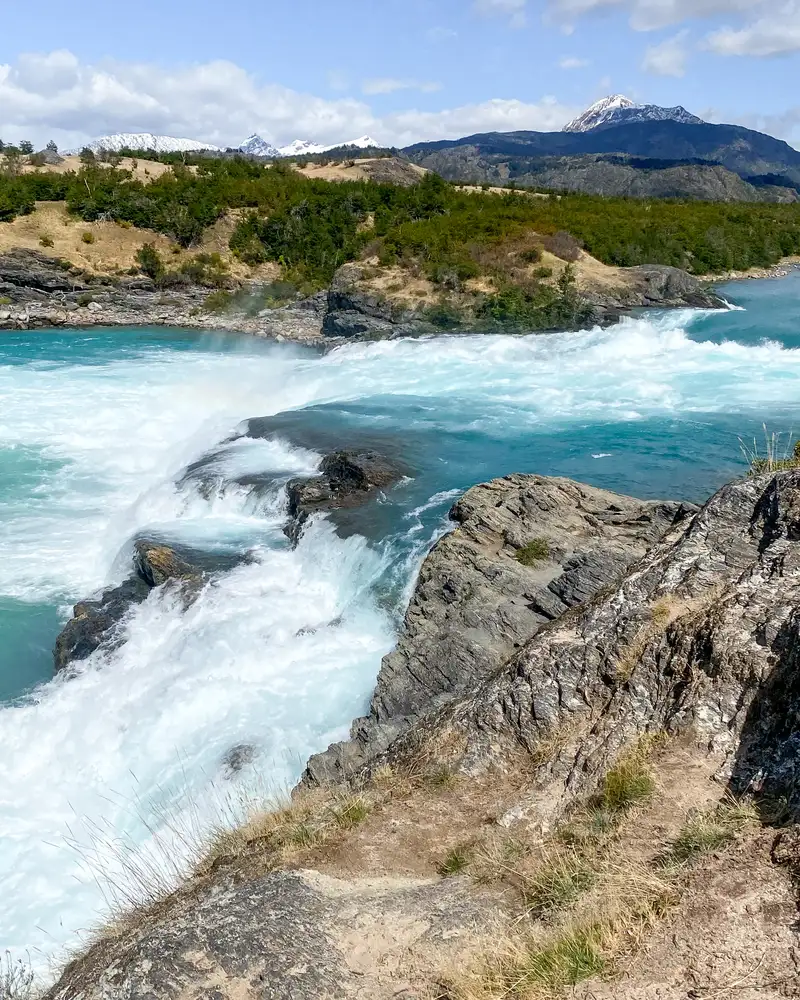
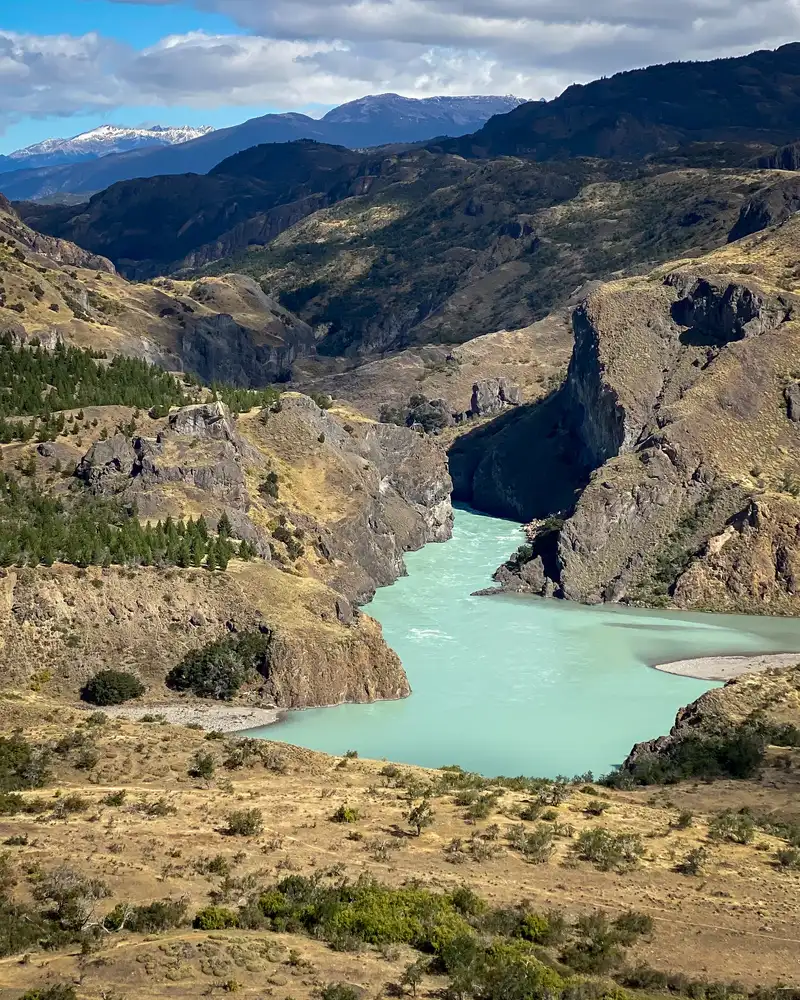
Villa O’Higgins – The End Of The Carretera Austral
Villa O’Higgins marks the official end of the Carretera Austral and the beginning of Chile’s Southern Ice Fields. There is truly something special about this place, thanks to its remote location and small-town atmosphere. It’s peaceful and quiet, set in a rugged mountainous landscape where time seems to stand still..
To reach Villa O’Higgins, you’ll need to cross the Mitchell Fjord. While you don’t need to book the ferry in advance, we recommend checking the schedules beforehand at RobinsonCrusoe websites.
The village is surrounded by mountains, forests, rivers, lakes, and glaciers, offering several trails to explore. One popular option is the Altavista Trail, which is close to the village and provides stunning views.
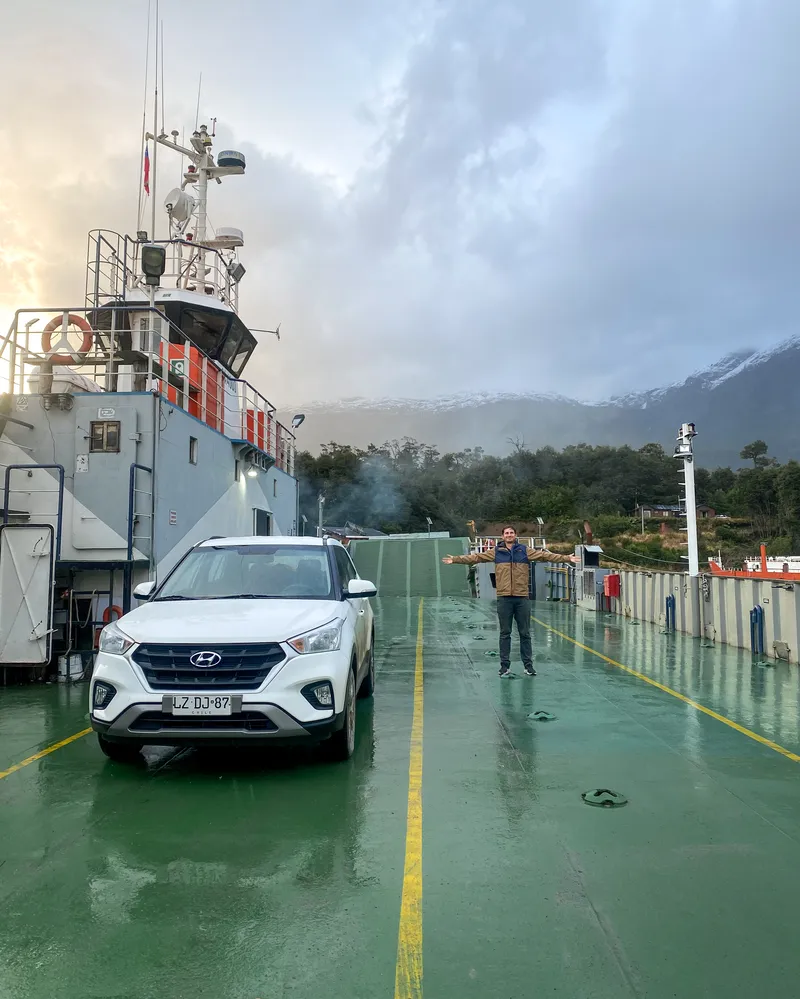
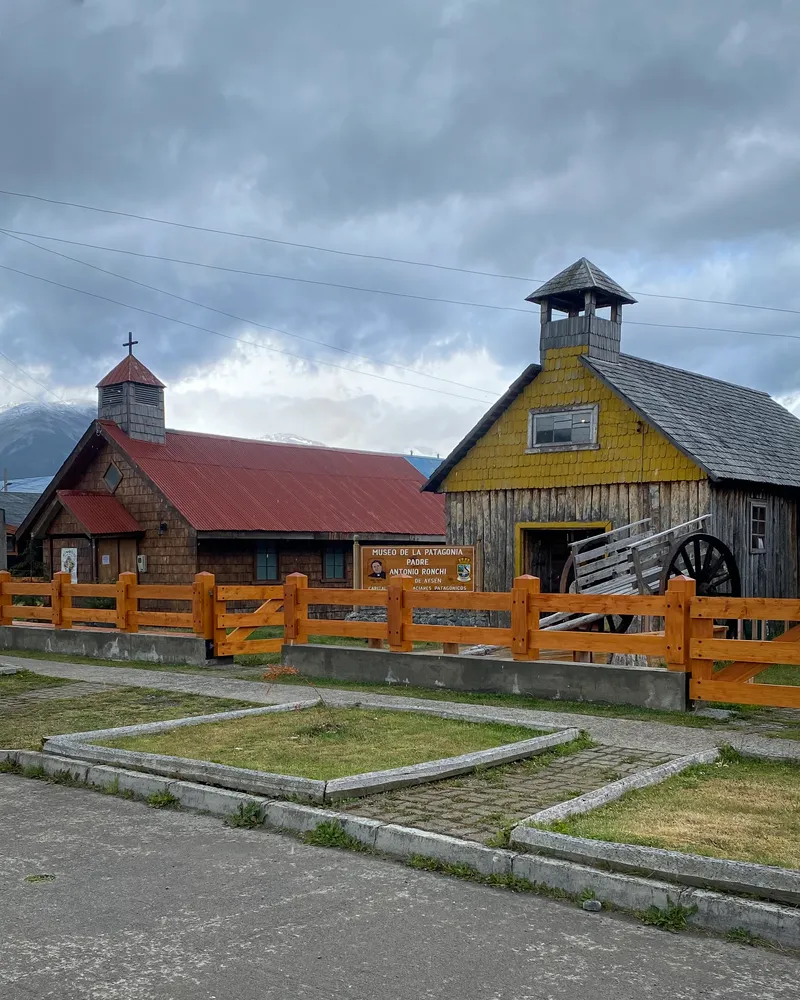
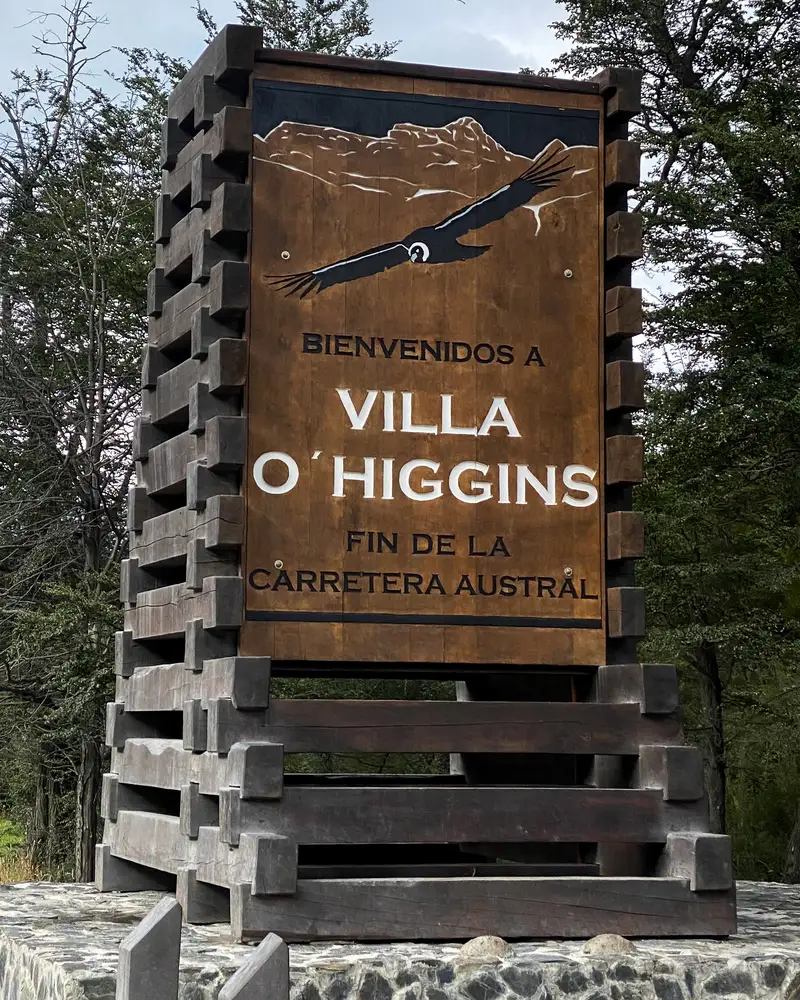
When we mentioned at the beginning of this blog post that the Carretera Austral ends in Villa O’Higgins, that wasn’t technically correct. The official end of the road is at Puerto Bahamondes, a tiny port where you can catch a ferry to Argentina. Reaching the end after such a scenic yet stressful road trip felt incredible. We made it!
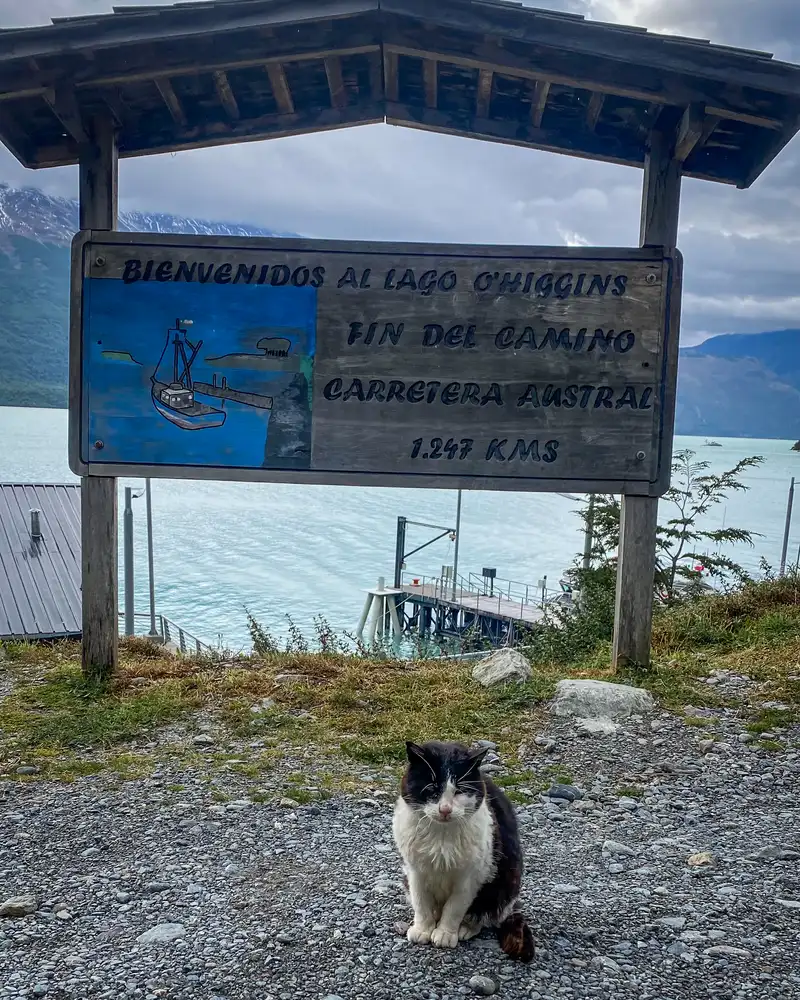
Our Final Thoughts and Tips
Our Carretera Austral Adventure: Challenging, Yet Unforgettable
To be honest, driving the Carretera Austral was one of the most challenging yet rewarding experiences we’ve ever had. The unpaved roads, potholes, and slow pace often made the journey feel endless. We even had to deal with a flat tire and a cracked windshield from flying stones on the gravel paths, which added to the stress. But despite these difficulties, the drive through remote, stunning landscapes was absolutely worth it. The sense of accomplishment when we finally reached the end was nothing short of amazing!
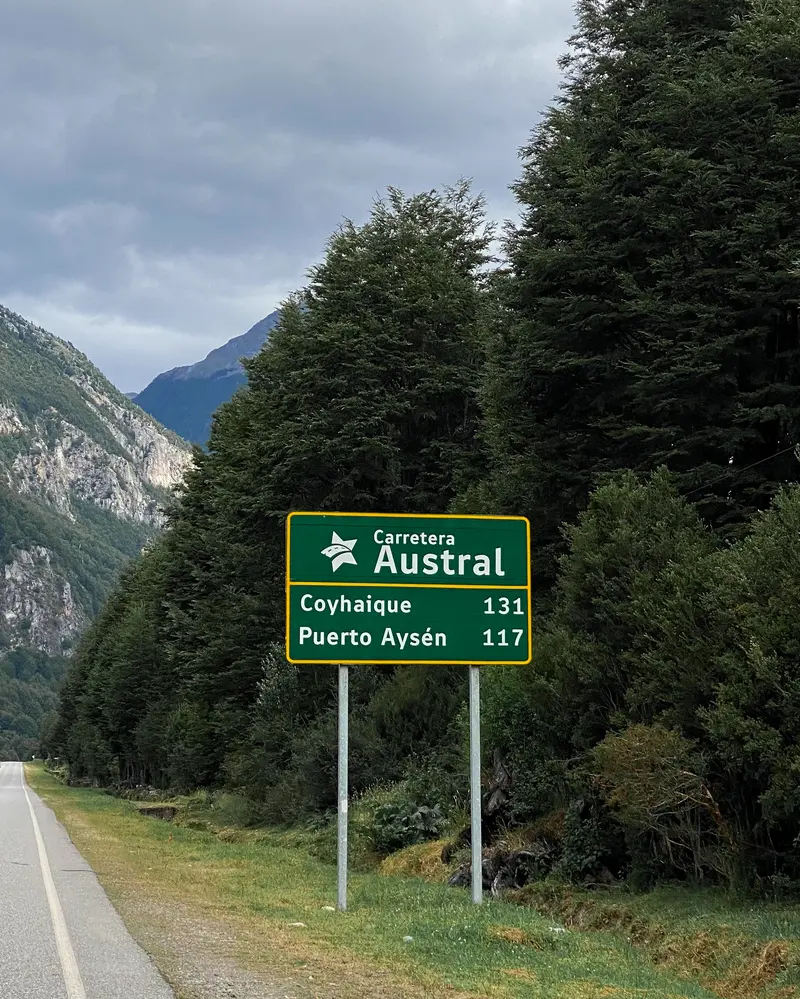
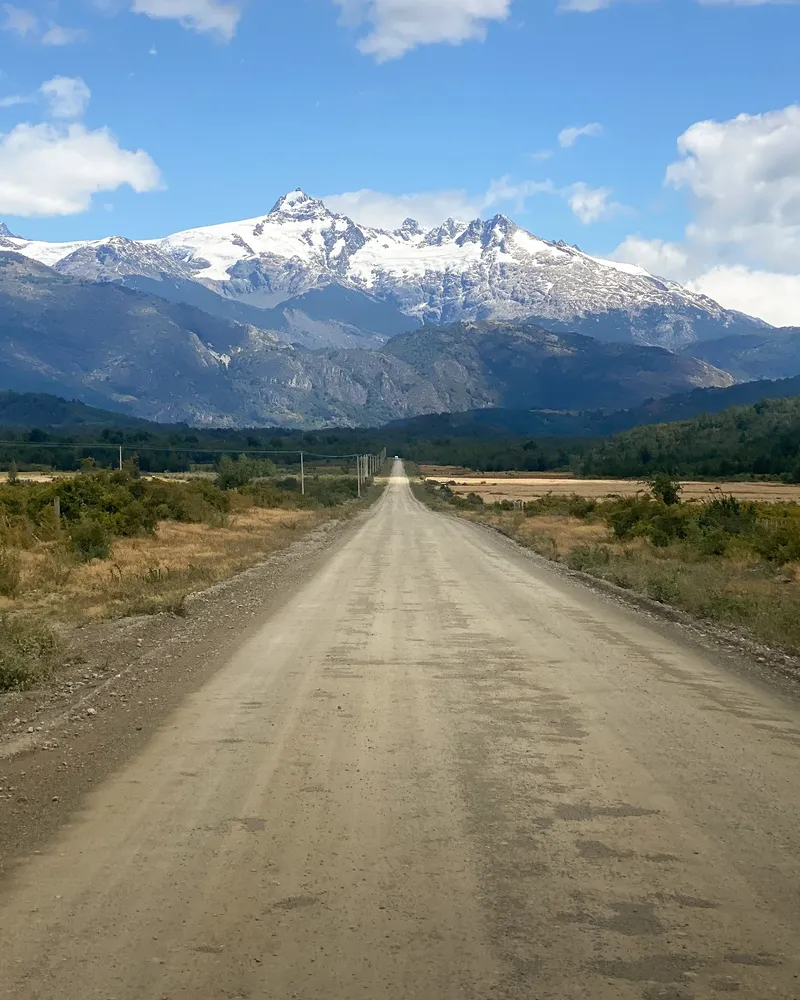
Our Experience on the Road
We’re not recommending any specific accommodations for this trip because we chose to sleep in our car the entire way down. It gave us the flexibility we needed and helped us save money. We cooked our own meals and found places to shower at official campgrounds. The app iOverlander became our best friend for finding overnight spots, showers, and other essential facilities. Honestly, we wouldn’t have survived the trip without it!
Weather in Patagonia
Patagonia’s weather is famously unpredictable. Heavy rains and strong winds can make driving even more difficult, and it’s essential to be prepared. We drove Ruta 7 in the second half of February, and though we had some sunny days, there were also a few rainy ones and some cold evenings. Always bring extra layers for hiking and sleeping because the temperature can drop quickly. The rain also turned the gravel roads into muddy challenges, forcing us to slow down, which caused delays. So, always plan some extra time into your itinerary in case of bad weather.
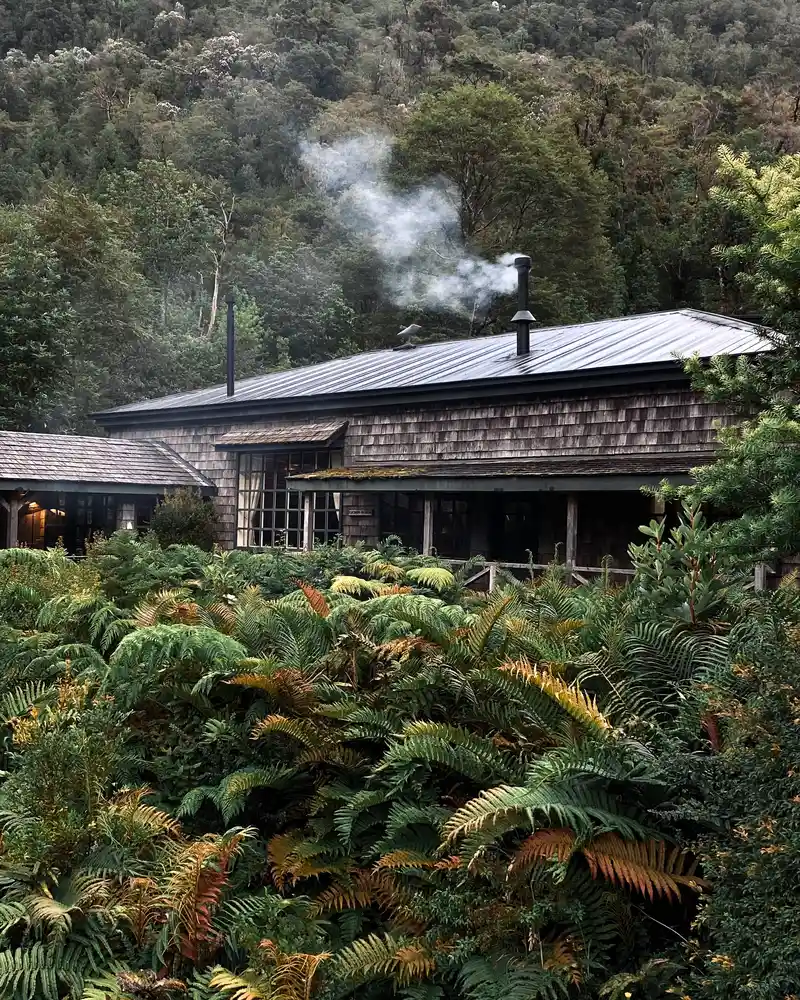

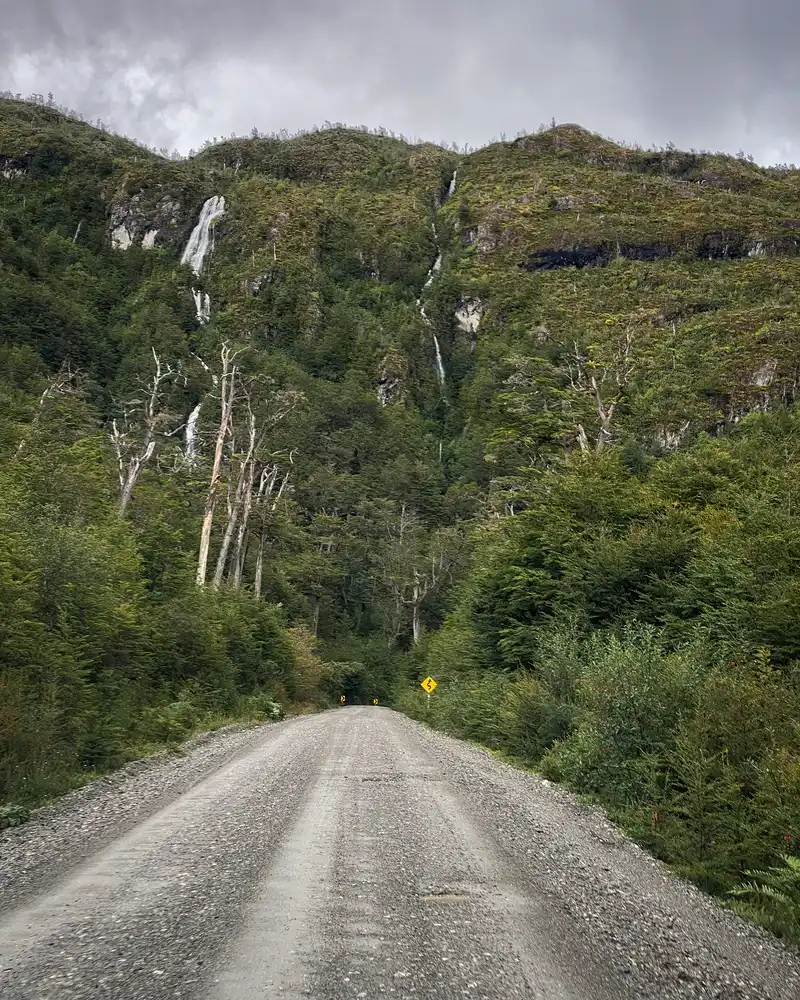
Tip for the Way Back: Cross into Argentina!
If you’re planning to return north after driving the Carretera Austral, we highly recommend crossing the border into Argentina. Just make sure to arrange the proper permits with your rental agency in advance. There are two great reasons to do this:
- Better Roads – Argentina has paved roads, making the drive smoother and less stressful.
- Lower Costs – Argentina is generally less expensive than Chile, so you can save on fuel, food, and accommodation.
Plus, you can visit Bariloche, a beautiful town with charming German architecture, great hiking trails, and delicious Argentine steaks (we can recommend restaurant El Boliche de Alberto). Trust us, it’s worth the detour!
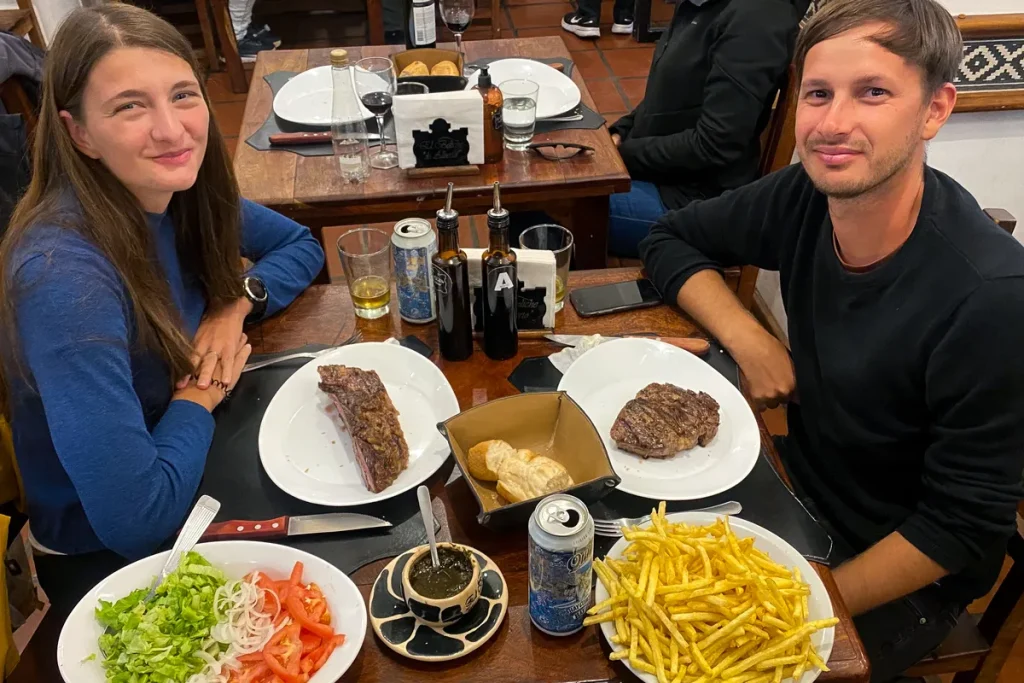
This route was tough, but the breathtaking scenery, rugged adventure, and remote beauty made it a journey we’ll never forget! 🙂

